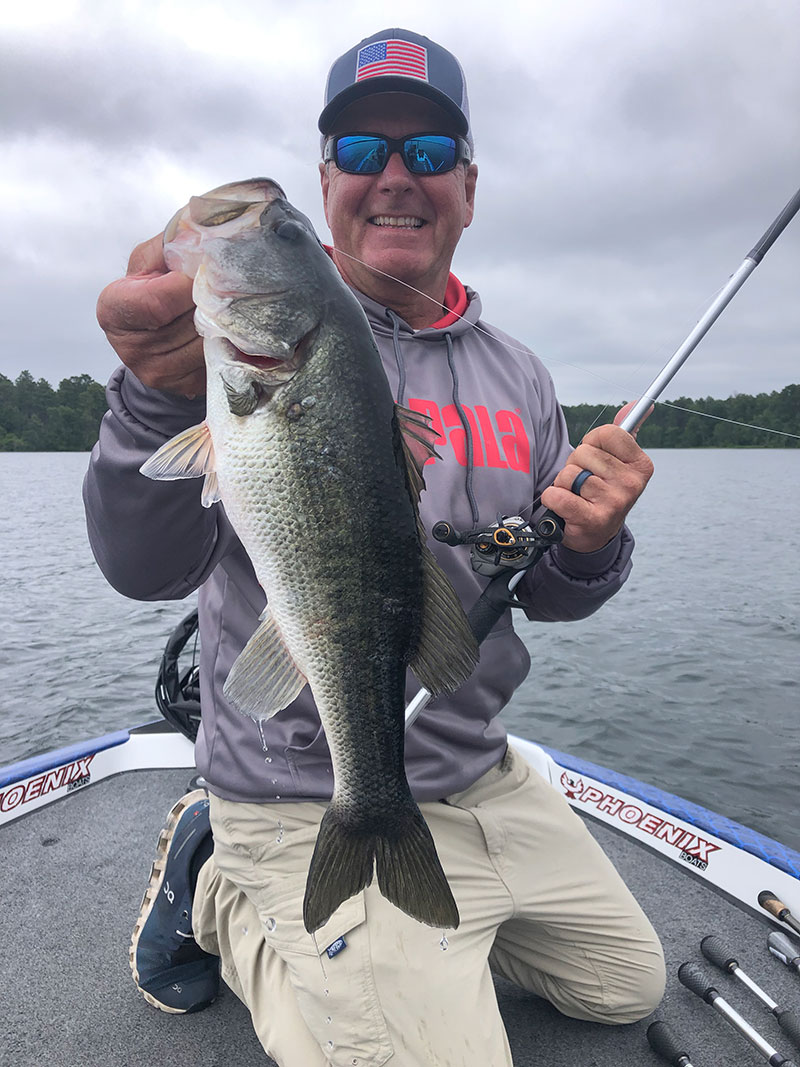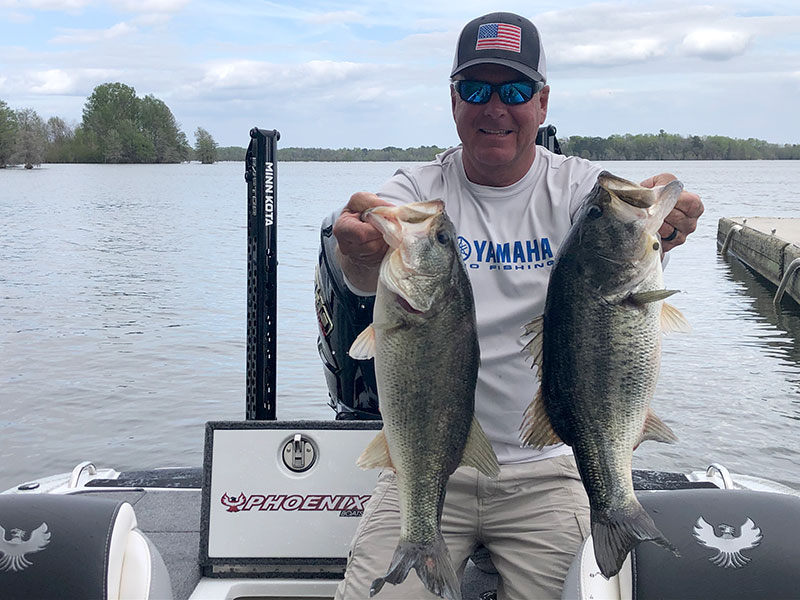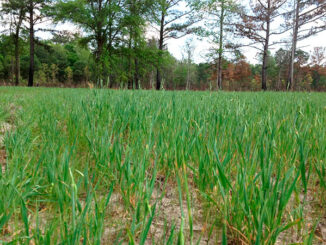I like to fish for bass year-round, and I certainly mix in some deer hunting in the fall and winter. But when February arrives, I’m really ready to go bass fishing, and I’m looking for a big fish. It is the perfect month to try and catch your personal best.
In the Carolinas, the weather can change daily. You can have highs in the 20s, or near 80 – and anywhere in between. You just have to play it by ear. But make no mistake; you can catch a big fish when it’s really cold or a lot warmer.
I try to make things simple. We have so many options nowadays with all the great terminal tackle we’ve got, electronics, boats and motors. But I am going to have four baits tied on the rods on my deck, and I have a very simple plan for finding fish that will bite.
I pay attention to the general water temperature. I know if it’s the low to mid-40s, I want to fish a little deeper. If it’s up closer to 50, I’m not going to fish as deep. I don’t get caught up in whether the water temperature is 40, 42 or 44 degrees. The surface temperature can vary so much from one day to the next, but most of the fish I’m catching are in 6 to 10 feet of water, and the temperature at those depths isn’t going to change as much as it is on the surface.
If the water is cold, I’m going to be fishing on the main lake, close to the main river channel. If it’s on the warm side, I’m going to be looking around the mouths of major creeks.
Look for slopes
You don’t have to be fishing bluff banks, but if you can find banks with a 45-degree slope, those are great. I want to fish places where I’m a cast away from the bank, with my boat sitting in 8 to 20 feet of water. Later on, in April, you‘ll be fishing flats where you’re sitting in 8 feet of water, 200 yards from the bank, but this is February.
The biggest key for me, everytime I get on the water in February, is that you’re going to find bass where you find the most bait. With the advanced electronics we’ve got these days, it’s easy to find bait, but plenty of times, you can find the bait without your electronics. Areas you might see bait are maybe a 1- or 2-mile section on the main lake, where you find all kinds of seagulls. They’re going to point you to the biggest concentrations of bait, and therefore, of bass. I’m going to start where I see the most gulls.
Lots of fishermen say they are looking for the clearest water they can find. But years ago, I gave up really paying attention to water clarity. I look for baitfish, knowing that I can change the colors of my bait to match water clarity.
Now, I’ll have four basic baits tied on when I head out on a crisp, February morning, and when I get an idea what’s going on with the bait and fish, I’ll choose which one to fish.
First is a jerkbait, a suspending jerkbait like a Rapala Maverick in a shad color. I’m going to fish when I find bass suspended around baitfish: threadfin shad, gizzard shad or blueback herring. I can fish that bait very slowly and in that 6- to 10-foot range where I find so many February bass.
Next, I’m going to have two crankbaits tied on: a No. 7 Shad Rap and a Rapala DT-6, both of them in golds or crawfish colors.
Slow it down
If it’s a really cold day, with water temperature in the low 40s, I’m going to fish that Shad Rap, because I can fish it with a very, very, very slow retrieve. I’m going to fish it on a Lew’s baitcasting rod and a reel with a 6-to-1 retrieve ratio. I know a lot of people like to throw a Shad Rap on a spinning rod – and most people can cast it farther on a spinning rod – but I like the leverage I’ve got with a baitcaster. I use 10-pound Sufix Advance fluorocarbon.

If you catch a little bit of a warming trend, that’s the time for the DT-6, which has got a little more vibration and thump to match those fish, which will be more aggressive. Lots of fish, all over the country, get caught on red or crawfish colored DT-6s. I’ll fish it on a 7-foot, medium action Lew’s rod and a BB-1 reel spooled with 10-pound Sufix Advance fluorocarbon.
The fourth bait I’ll have tied on is a Buckeye Mop Jig with a Yamamoto Flappin Hawg trailer. Most of the time, I’ll be fishing a half-ounce jig, but if they’re shallower and I want a slower fall, or if they’re in heavy cover, I’ll drop down to a ⅜-ounce jig,
I feel comfortable that I can catch fish on a jig whether the water temperature is closer to 40 or closer to 50. I can slow the retrieve down enough to catch them when it’s really cold. I’m going to fish a brown or watermelon jig when the water is clear, and if the water is stained, I’ll go with a black/blue jig. I’ll make the color of the trailer a little different, but the same basic tone. I’ll use green pumpkin with the brown or watermelon, and something like sapphire blue with the black/blue jig.
I’ll fish that jig when I come across an area that really looks like it will hold a big fish, some cover like a stump, a tree, or even a boat dock that I’m confident about. In those cases, I’ll tie a jig on a 7-foot-2, heavy Lew’s jig rod with a BB-1 reel spooled with 17-pound Sufix Advance fluorocarbon. I like the reel to be much faster, to have an 8-to-1 retrieve ratio. This time of year, I’m dragging that jig, but you need the speed from your reel to pick up the line after you’re finished fishing out a cast.
If I can find any kind of vegetation in the lake, I’ll try to fish around it – especially if baitfish are around. The vegetation doesn’t have to be alive; it can be dormant. For example, lily pad stems are great. My other favorite cover is rock. I like to fish a rocky bottom much better this time of year than sand or mud, and it can be all kinds of rock: shale, slate, river pebbles.
Most of the time, you’re going to be fishing for one bite on a spot. If you catch a day with the water temperature in the 50s, some of those prespawn fish might get together, and you might catch three or four on a rocky point. But it’s more like one here and one there.
But the one, oh, it might be one to remember.
Match water clarity:
Some anglers will only fish the clearest water they can find, but you can fish water of any clarity, as long as you match the color of your lures to the clarity of the water.






Be the first to comment